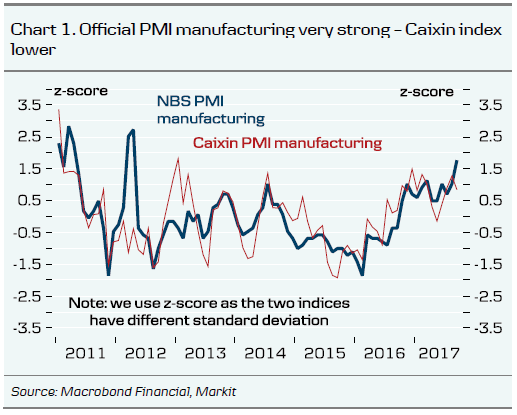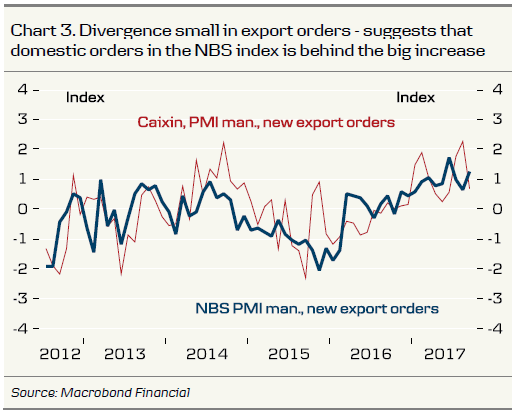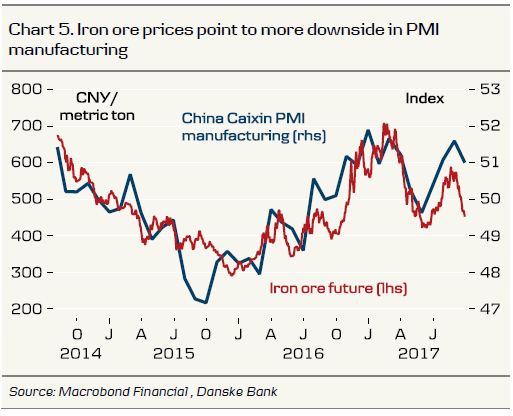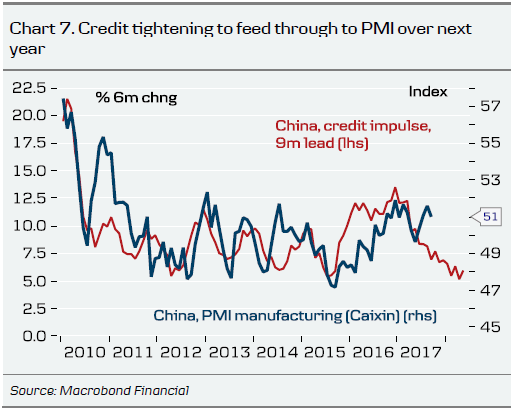China PMI mixed. The official NBS manufacturing PMI for September was very strong, rising to the highest level since 2012, whereas the private Caixin PMI manufacturing fell back (Chart 1). The picture was even more pronounced in new orders (Chart 2).
Caixin PMI more credible. Normally, the two indices move in line, but this month there was an unusually big divergence. We have a bit more faith in the Caixin index this month as it fits better with what we have seen in commodity markets. As Chart 4 and 5 show, PMI is quite correlated with commodities and the decline we have seen in metal prices in September (not least in iron ore) clearly points to somewhat slower activity. One could have a suspicion that the companies when answering the official PMI survey have painted a slightly more positive picture than what is the real picture, because of the Congress in the Communist Party coming up this month.
PMI heading lower. We expect the PMI to head lower over the coming quarters for several reasons: (1) steel production seems to have been boosted over the past few months ahead of the new curbs on production that will be implemented over the winter due to pollution issues (Chart 6). Hence, the ramp-up in production is likely to be replaced by a big decline over the winter. (2) The housing market has started to slow already due to tighter conditions for home purchases. We expect this to feed increasingly into slower construction activity over the next year.
No hard landing. While we expect a slowdown and for Caixin PMI manufacturing to fall below 50 in coming quarters (51.0 in September), we do not look for a hard landing: (a) housing inventories are low generally, putting a floor under how much construction growth should slow and (b) we expect export growth to stay robust due to the ongoing recovery in the euro area and the US.
Slower Chinese activity to weigh on EM assets. Even though China is not headed for a hard landing, even a moderate slowdown means that the tailwind to emerging markets assets so far this year could turn into a moderate headwind. However, emerging markets are still supported by search for yield, only very gradual rate hikes from the Fed and generally improving fundamentals. See Emerging markets at a crossroads – mind the risks, 29 September 2017.























